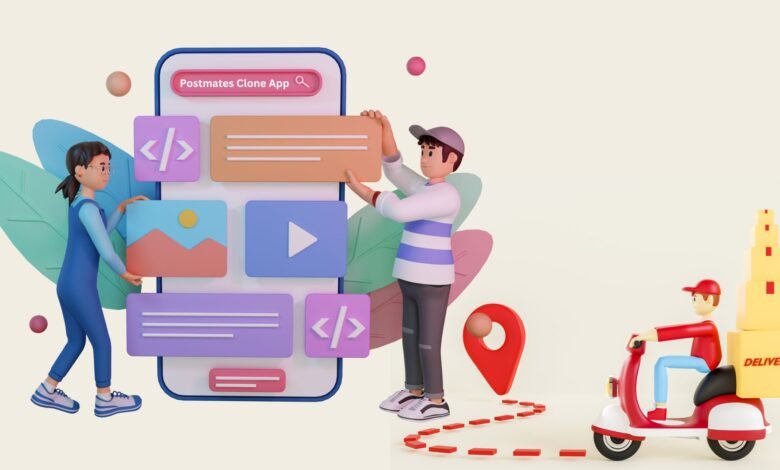
Any software depends critically on user retention, but in the cutthroat environment of delivery services especially. An application can keep its consumers interested throughout time, so guaranteeing that they will remain using the service instead of giving it up for substitutes. In the framework of delivery applications like Postmates, user retention directly affects profitability since keeping current consumers is usually more affordable than attracting new ones. Inspired by successful models like Postmates, this blog investigates practical ways to improve customer retention.
Understanding Postmates’ Retention Model
Postmates has developed a robust retention model using numerous fundamental techniques. Its success is mostly dependent on the knowledge that consumer loyalty exactly corresponds with user experience. The easy-to-use software together with a wide range of delivery choices keeps users returning. Postmates also makes good use of data analytics to better grasp user behavior, which enables customized products to satisfy the changing wants of their clients. Along with promoting loyalty, this proactive strategy raises general customer pleasure.
Key Metrics to Measure Retention
Emphasizing important indicators like Customer Lifetime Value (CLV) and Churn Rate can help one to properly assess customer retention.
- Customer Lifetime Value (CLV): This statistic approximates the whole income a client should bring around during their app-based partnership. Greater CLV points to improved user base engagement and retention.
- Churn Rate: Over a given period, this gauges the proportion of users that discontinue using the app. While a larger rate may point to underlying problems that need to be addressed, a lower churn rate denotes successful retention techniques.
Knowing these numbers helps delivery applications adjust their plans and raise user retention over time.
User Onboarding Strategies
Retaining customers right from their first app encounter depends on a strong onboarding experience. Simplifying the onboarding process will help to greatly lower drop-off rates. New users should be led through a simple, friction-minimizing sign-up and account creation procedure.
Furthermore improving user experience are tailored walkthroughs. Showing fresh customers how to use the app and navigate it will help them immediately see the value of your offering. Higher retention rates as users feel more confident in using the app result from this commitment to user education.
Incentives for New and Returning Users
Offering rewards may be quite successful in both new and returning users’ encouragement. While loyalty schemes for returning users might keep users involved over the long run, discounts on first orders can inspire new users to use the app.
Another great tactic is referral incentives; these encourage current users to bring in new ones, therefore strengthening the app’s community as well as your user base. Higher retention rates and more use can follow from these incentives.
Personalization in Delivery Apps
Improving user retention depends much on personalizing. Using behavioral analytics and artificial intelligence, delivery apps can provide individualized recommendations based on past purchases and preferences. If a customer regularly orders from a particular restaurant, for example, presenting comparable options might produce a more customized experience that speaks to their tastes.
Furthermore, special promos like birthday discounts let users feel appreciated and understood, therefore motivating them to stick to the app.
Seamless UX/UI for Better Retention
Retaining users mostly depends on a flawless user experience (UX) and easy user interface (UI). A simple design should be given top priority in apps so that users may quickly and without uncertainty traverse functionalities. Furthermore important are accessibility elements; apps should be useful for those with disabilities, thereby improving general inclusiveness.
Investing in UX/UI design not only raises user satisfaction but also helps to lower friction points that can cause consumers to stop using the app.
Push Notifications and Alerts
Though they can greatly affect user retention, push notifications should be utilized sparingly to prevent overloading users. Good notifications should be valuable, including reminders depending on user behavior, order updates, or information about special specials.
The secret is to strike a mix between involvement with regard to consumer preferences. Giving consumers the ability to personalize their alert settings will improve their experience and increase retention rates.
Offering Diverse Payment Options
User convenience depends on many payment choices being available. Providing conventional credit card payments, mobile wallet integrations, and even cash alternatives helps to suit a larger spectrum of consumers. This adaptability lowers buying obstacles, thereby motivating consumers to finish transactions and return for the next orders.
Clear pricing and safe payment methods can also help to establish confidence and hence reinforce app user loyalty.
Customer Support Excellence
For user retention, great customer service can be revolutionary. Providing 24/7 support across several channels—including direct contact options, in-app help sections, and chatbots—ensures users may quickly address problems.
A well-crafted help section inside the app can enable users to rapidly locate solutions without direct engagement. Excellent customer service not only answers user questions but also helps to build a good brand image that motivates consumers to stick to their allegiance.
Addressing User Feedback Proactively
Setting up a strong feedback system lets users express ideas and comments. Frequent feedback requests show that you respect user opinion and help to highlight areas needing work.
Including user comments in frequent app releases reveals your dedication to improving their experience. User retention and satisfaction will be much raised by this responsiveness.
Role of Marketing in Retention
Retention of users depends critically on marketing. While a strong social media presence can keep your business top-of-mind, retargeting efforts can remind past users of your app and inspire them to return.
Additionally luring users back into the app is interesting material highlighting promotions or new features. Regular email newsletters or social media updates keep consumers informed and help to build brand loyalty.
Building Trust and Security
User retention mostly depends on trust, which also forms security. Clear policies and safe payment choices help to allay people’s worries about security. Clearly stating your privacy rules and security policies can help consumers trust your app and increase their likelihood of returning.
Establishing dependability and security will help to boost user loyalty and long-term retention.
Leveraging Home Service App Development Trends
Examining patterns in in home service app development can create fresh paths for user interaction as delivery applications change. Expanding offers into residential services—like cleaning, maintenance, or installation—allows you to access other markets and build a more complete platform for consumers.
Combining these services helps to improve user retention by giving more value to one app and motivating people to depend on your platform for several purposes.
Future Outlook
Long-term success depends on emphasizing user retention even as the scene of distribution apps changes. Apps may increase user satisfaction and loyalty by adopting sensible plans and drawing lessons from successful companies like Postmates. The secret is to know user behavior, customize experiences, and always enhance the app depending on comments.
In the end, a dedication to user retention will not only propel expansion but also help your software to be a reliable alternative in a cutthroat industry.
Conclusion
User retention in the always-changing terrain of distribution apps is not only a statistic but also the basis of success and steady development. Using sensible plans taken from successful companies like Postmates clone script will help you greatly raise user loyalty and happiness. Every element of the app helps to keep users interested, from streamlining the onboarding process and personalizing user experiences to providing many payment alternatives and first-rate customer service.



